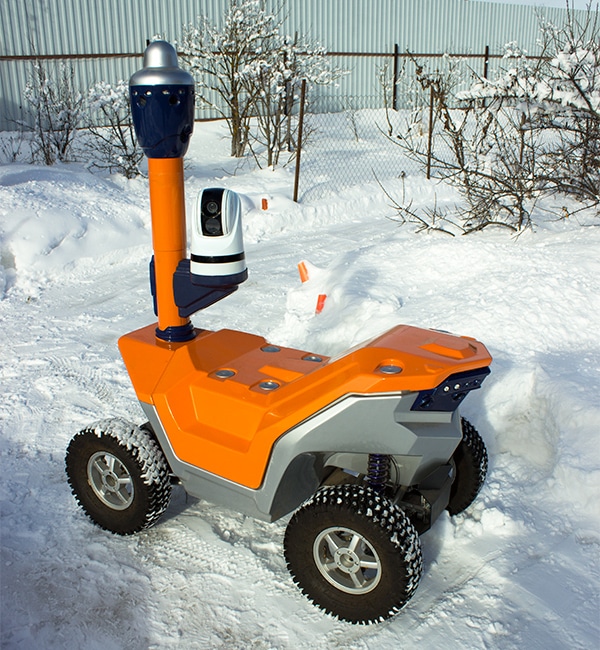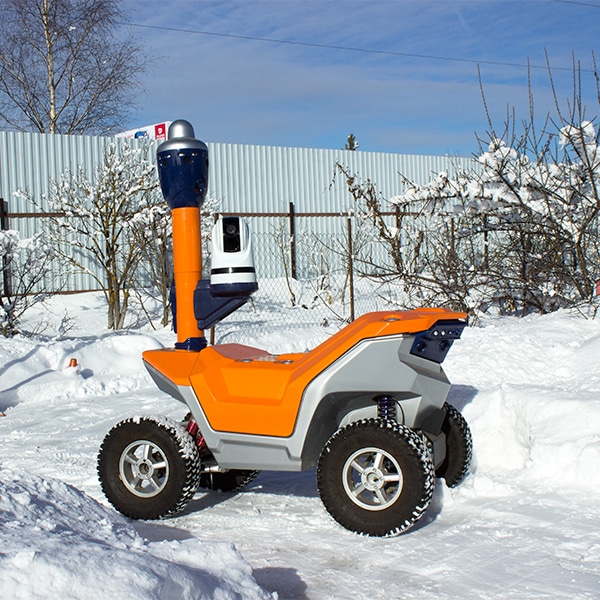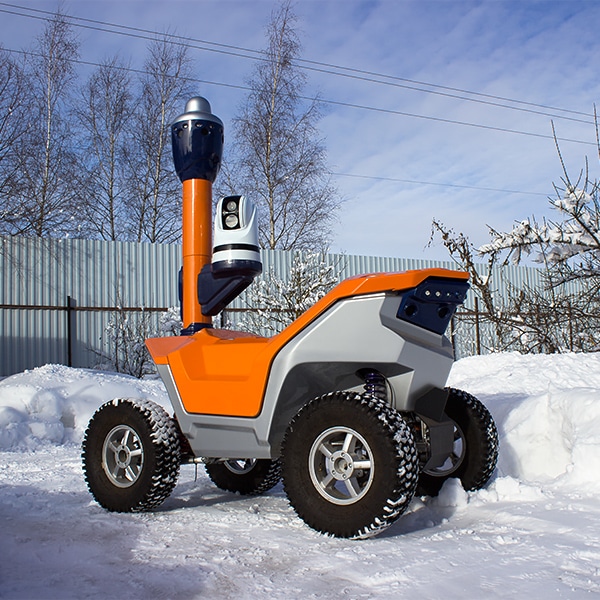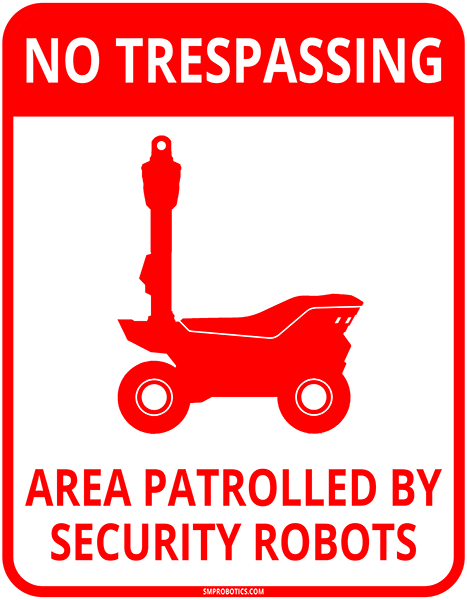A new-generation thermal inspection robot starts trial operation
New Thermal Inspection Robot
Thermal inspection robots are based on the 2nd generation robot, model year 2019. It is used as a basic solution for S3.2 (Electrical Substation Inspection) and S6.2R (Gas Leak Inspection) robots.
The new robot model carries a PTZ thermal camera and embedded supercomputers to recognize visual and thermal images. A visual channel ensures accurate PTZ camera pointing at the inspected equipment. A thermal channel displays equipment condition data.
Thermal inspection robot

Oil & Gas Inspection Robots
The new robot model enables unmanned inspection of oil and gas equipment. Training of skilled personnel and monitoring their performance requires huge efforts and costs. Inspection robots permit these operations to be automated. Once learned, the robots will be able to save and transfer the inspection program to other robots. As an option, the S6R Gas Leak Inspection robot may have the software that uses PTZ camera controls to spot pressure gages and read them. Along with the pressure gage image, the robot sends straight to the operator the measured values in case of critical deviations. The robotic inspection data are transmitted into the control center and can subsequently be exposed to Big Data analysis.
Oil & gas inspection robot

Electrical Substation Inspection Robot
A thermal inspection robot is a perfect choice for automatic inspection at unmanned substations. Power grids stand out for their immense length and have multiple substations, often in remote and uninhabited locations. A human inspection of equipment is time-consuming, whereby most of the time is occupied by a specialist’s travel to the inspection site. A thermal inspection robot deployed at an electrical substation will enable remote monitoring of the equipment thermal condition. The robot can maintain fully autonomous operation, due to automatic charging and remote monitoring instruments. Just as important is the fact that in custom version the robot can withstand extremely high air temperatures and direct sunlight. This will enable electrical equipment inspection in critical modes.
Electrical substation inspection robot












